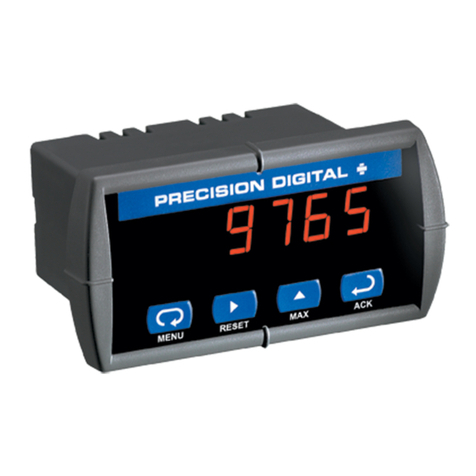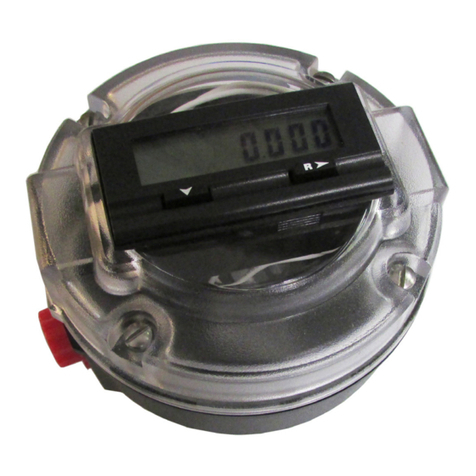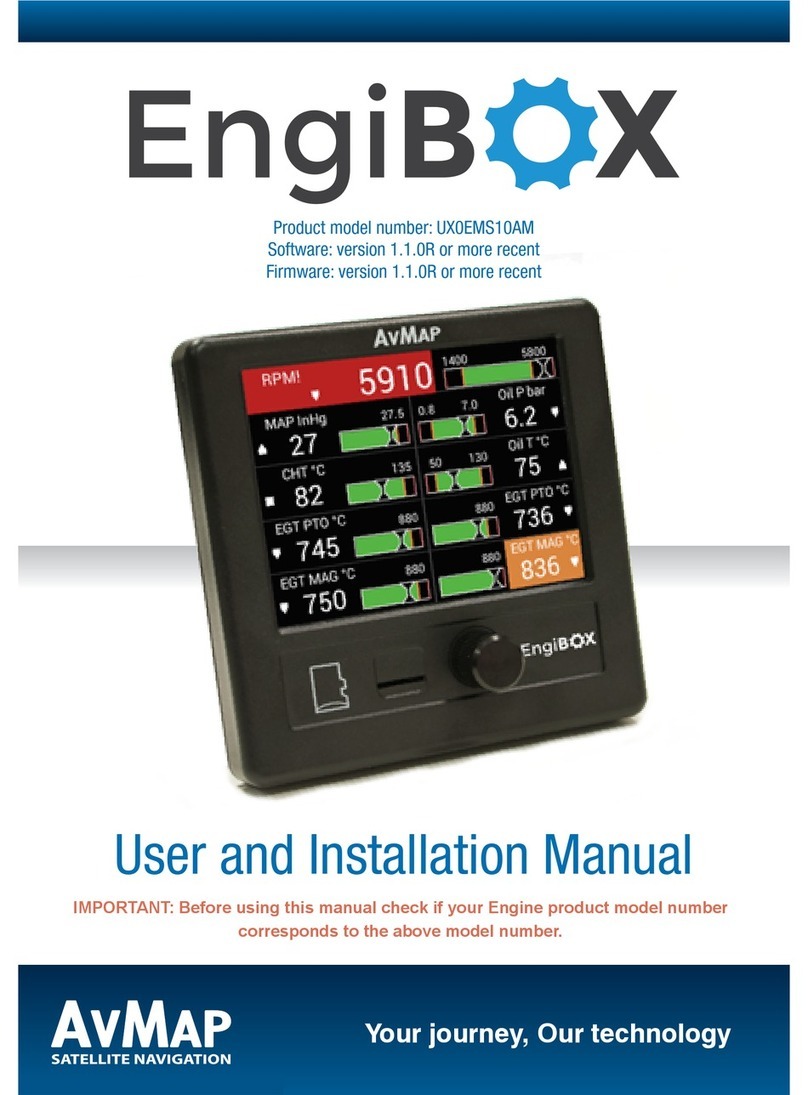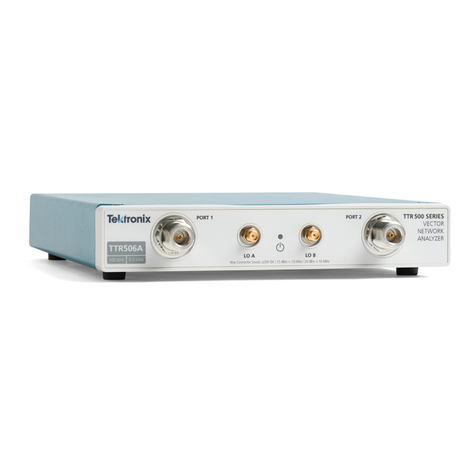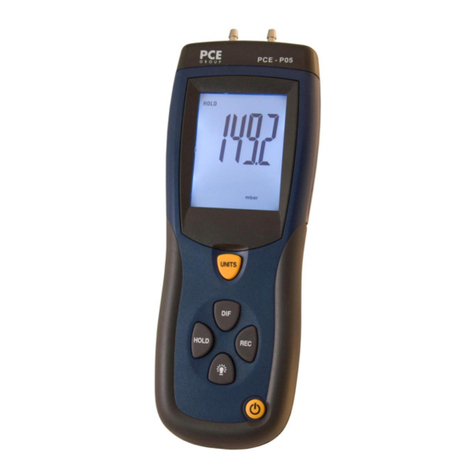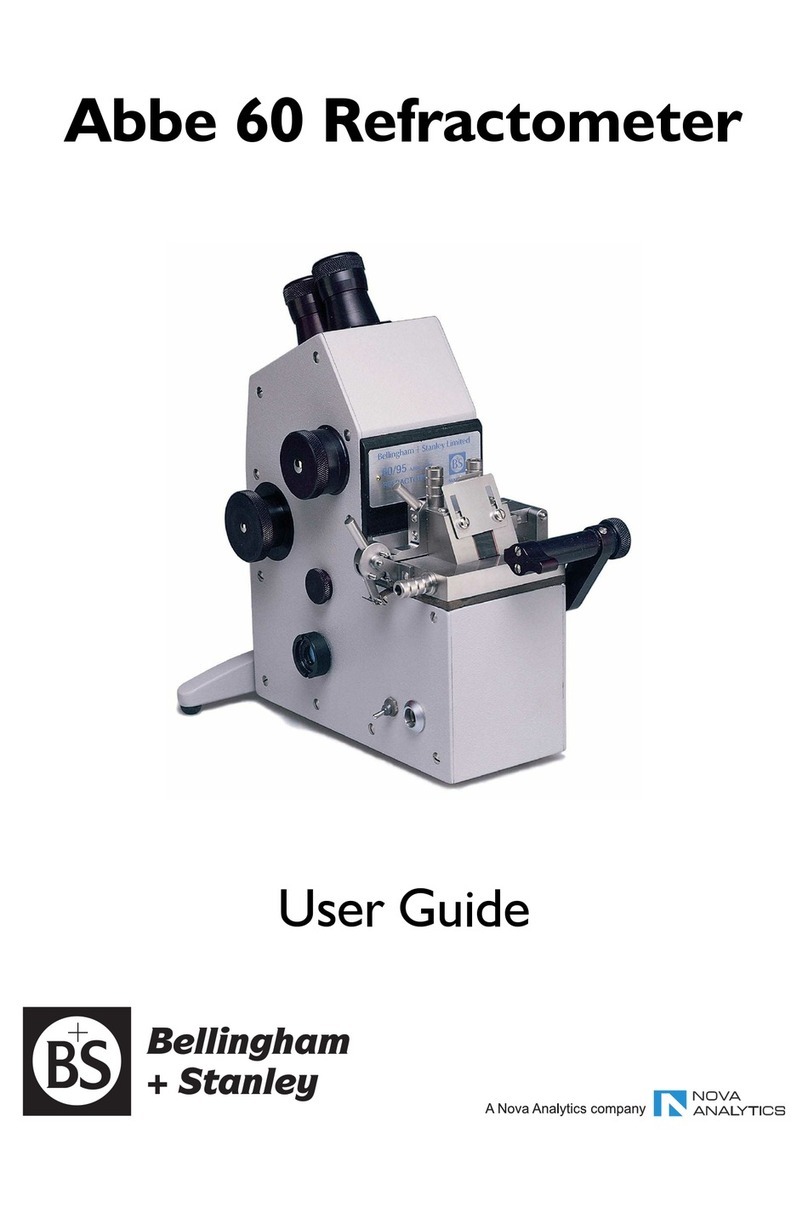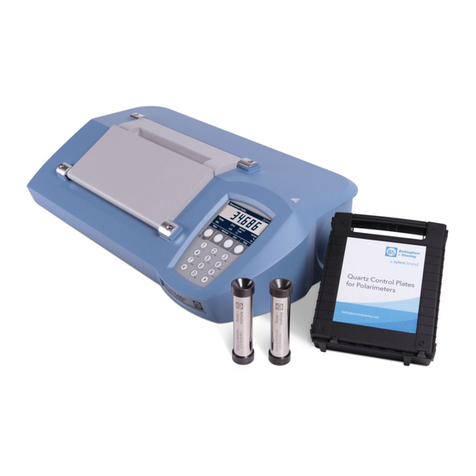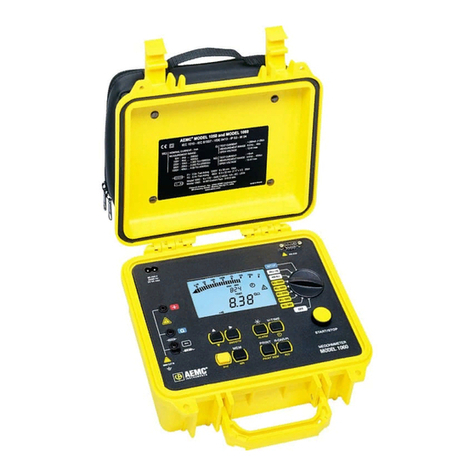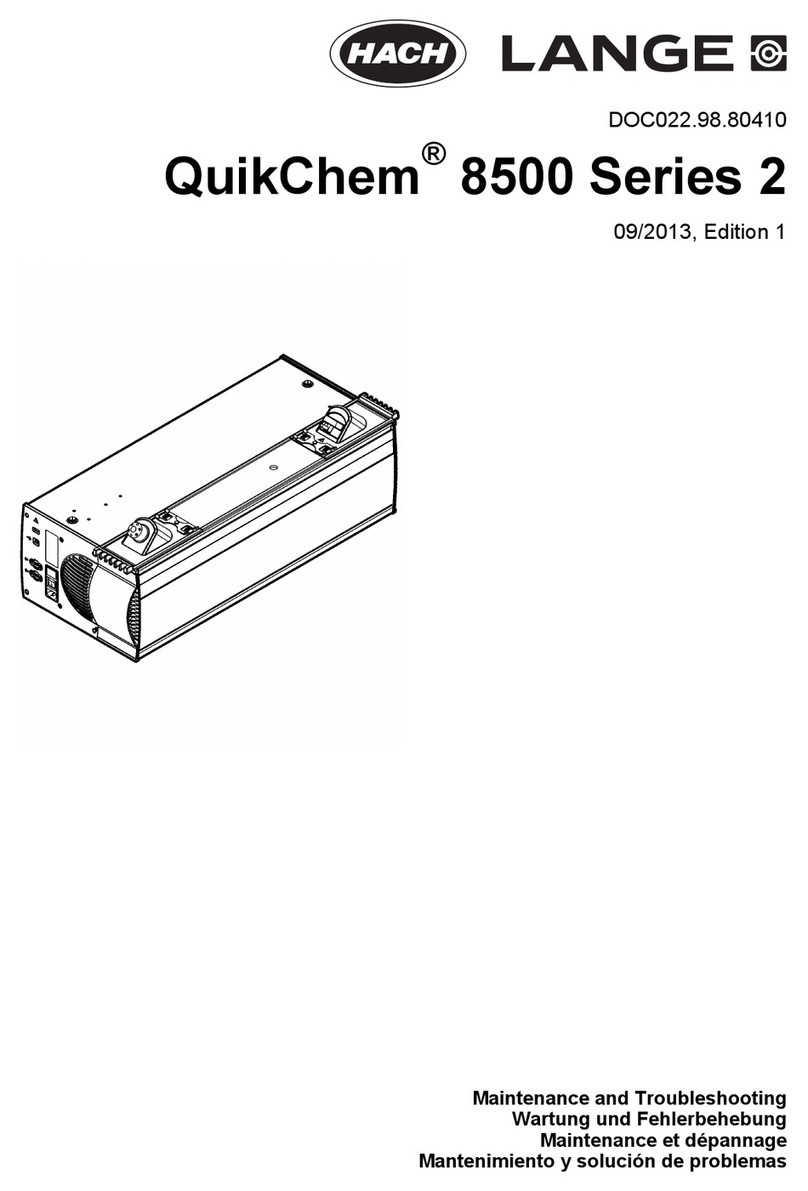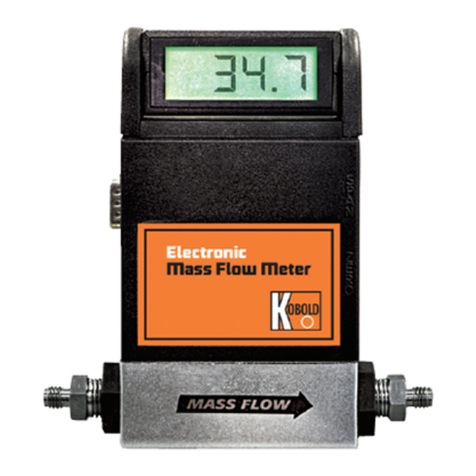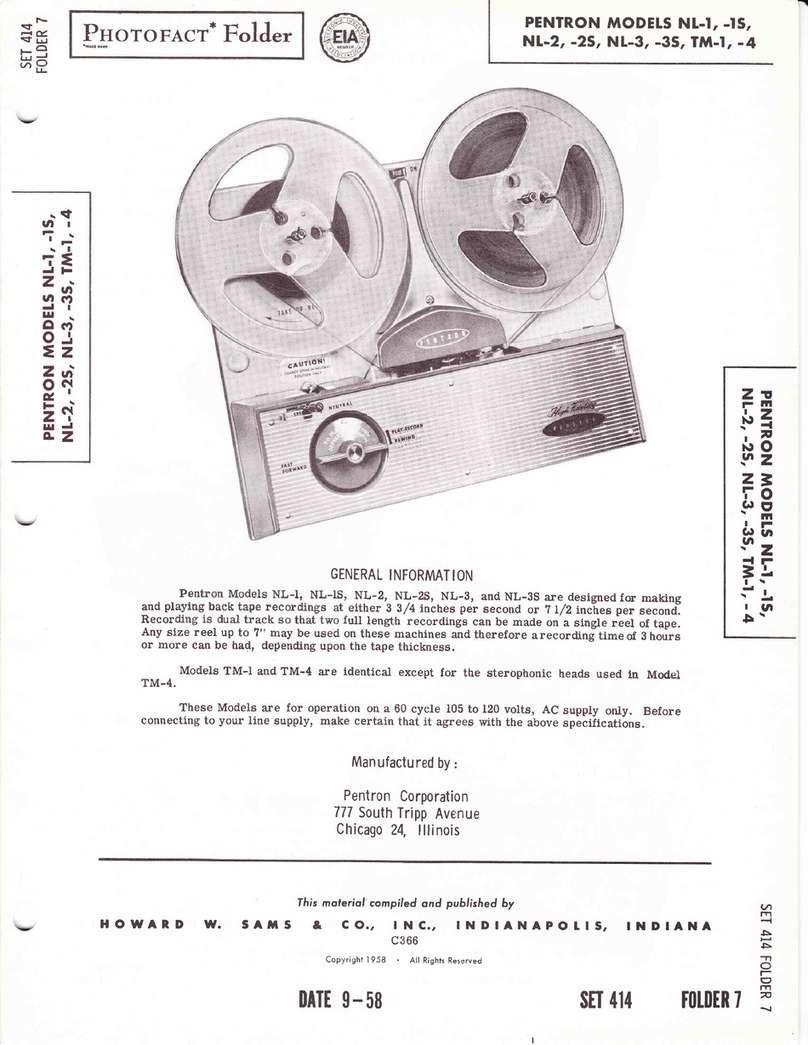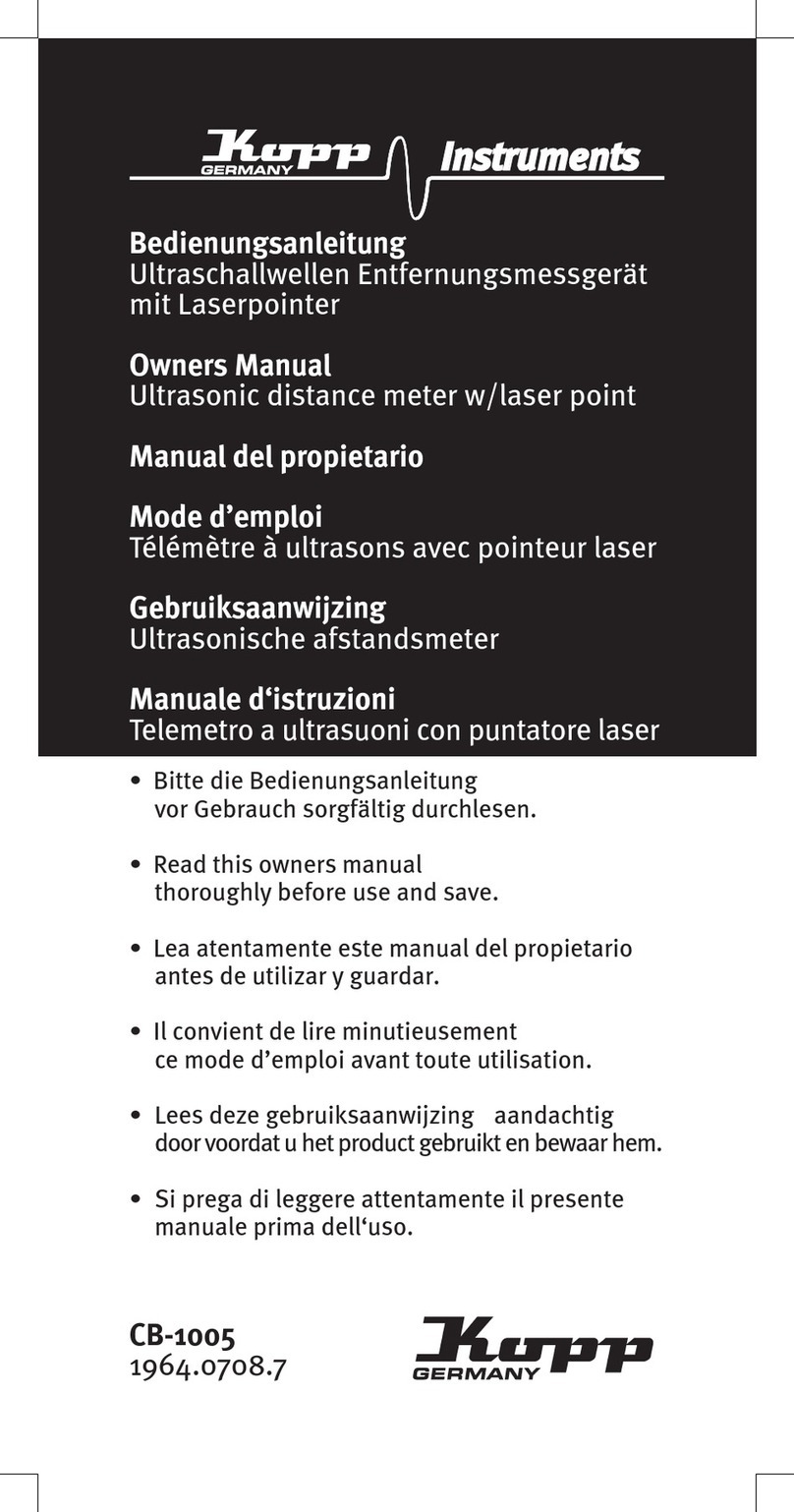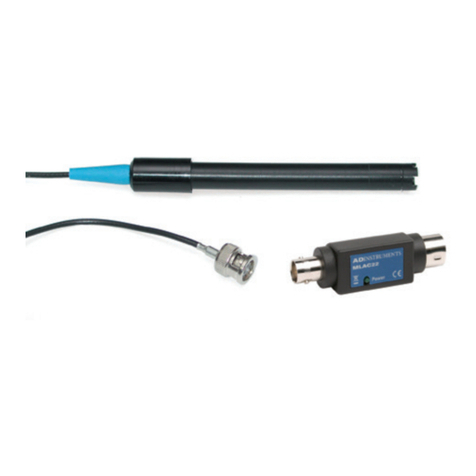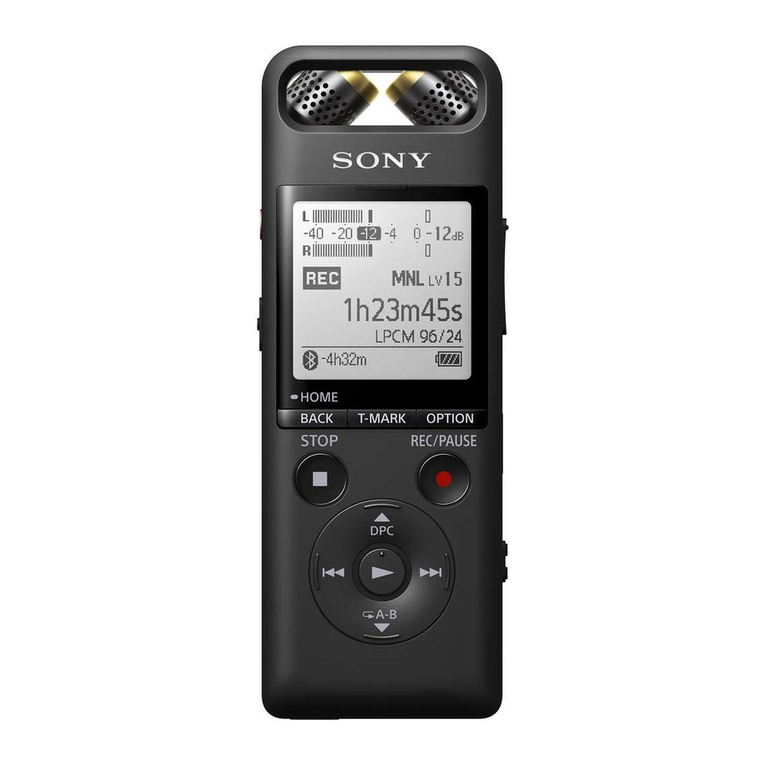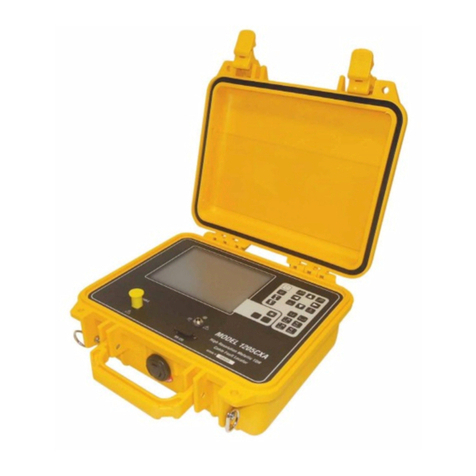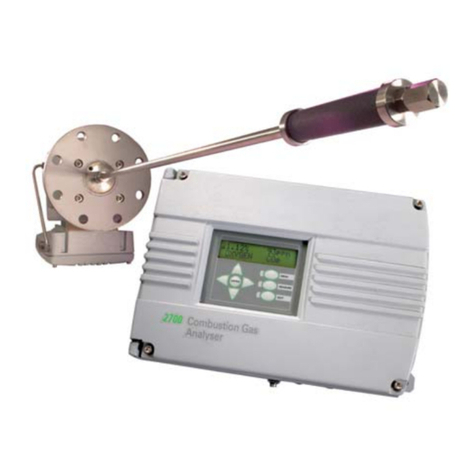S:\mkting\brochure\instruct\wineinst.doc
EXAMPLE
Light dry table wine
S.G. reading might be 0.993, from which the D reading is minus .007 or -7
units.
Refractometer reading might be 37.
As the D reading is negative (less than 1.000) the (R -D) reading becomes
(R -( -7) which is (R + 7), that is 44.
From the table, find the alcohol content 18.8° proof, or 10.7% v/v.
Sweet dessert wine
S.G. reading 1.015 from which D is 15.
Refractometer reading 72.5.
(R -D) is 57.5.
Alcohol content from table 27.5°proof or 15.7% v/v.
PRECAUTIONS TO IMPROVE ACCURACY
·It is important that both the R and the D readings are taken at the same temperature.
·Handle the refractometer, the hydrometer and the jar as little as possible.
·Make sure that the prism is cleaned and dried between each reading, using a little clean
water at room temperature, and a soft cloth to dry.
·Leave everything for as long as possible between readings to equalise temperature
differences, but without allowing evaporation.
·Make sure the scale of the instrument is in sharp focus before taking readings; adjust the
eyepiece if necessary (Eclipse model only)
·Look at the quality of borderline obtained. Poor sharpness indicates insufficient wine on
the prism, or temperature gradients across the prism, or that the prism was not properly
dried after the last reading (Eclipse model only).
·If in doubt, clean and dry the prism, leave for a while, and repeat measurements from the
start. Measuring the same wine sample twice in quick succession is a useful indication of
the reliance that should be placed on the results obtained.
·The zero of the refractometer can be checked at any time by using distilled water at
20°C. When the R reading should be 15 within ½ a scale division (Eclipse model only).
·Always clean the plastic illuminator plate when cleaning the prism (Eclipse model only).

